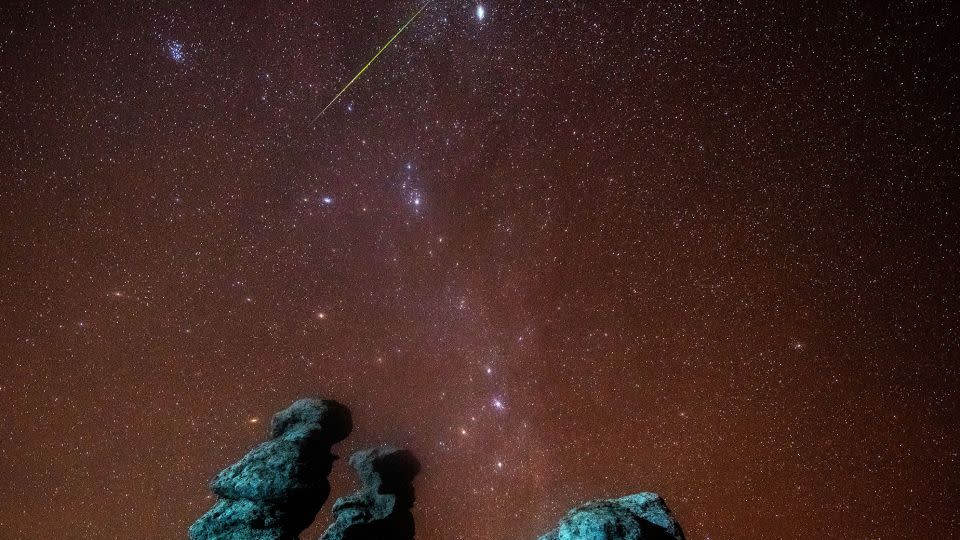Keep an eye on the sky for the Leonid meteor shower this weekend

Sign up for CNN’s Wonder Theory science newsletter. Explore the universe with news on fascinating discoveries, scientific advancements and more.
Up next for end-of-year celestial spectaculars is the Leonid meteor shower, set to produce bright meteors with persistent trains streaking across the night sky.
The Leonids have been active since early November but are expected to peak this weekend at 12:33 a.m. ET Saturday, according to EarthSky. Sky-gazers could see 10 to 15 meteors per hour in a dazzling display.
Those looking to catch a glimpse of a meteor from this shower are in luck because the moon will be in its waxing crescent phase, and there will not be as much light interference as there is with a full moon, said Dr. Sharon Morsink, a professor of physics at the University of Alberta in Edmonton, Alberta. The moon will be 23% full on the night of the shower’s peak, according to the American Meteor Society.
While the peak is on Saturday, the same rates of meteors can be seen a few days before and afterward. The best time to view the shower will be after midnight in any time zone when the constellation Leo will be the highest in the sky, said Morsink, who also manages the university’s astronomical observatory. Leo is the meteor shower’s radiant, which is the point where the phenomenon appears to originate from, she explained.
“The most important thing is to get away from light pollution,” Morsink said. “You can still see some meteors if you’re in the city, but you’re not going to see anywhere near the number that you get to see if you get out of the city.”
Meteor storms from the Leonids
The Leonids are famed for generating meteor storms, the term used when a shower reaches rates of at least 1,000 meteors per hour, according to NASA.
Holding the record for the highest rate of meteors per hour seen in a meteor stream, the Leonids produced 144,000 meteors per hour in 1966, according to the American Meteor Society. The shower also produced outbursts of higher rates in 1999 and 2001, but the society does not expect another storm until 2099, when the Earth is predicted to encounter a dense cloud of debris from the parent comet, Tempel-Tuttle.
As the comet travels around the sun, it leaves a trail of rocks and dust that appears as the annual Leonid meteor shower when Earth moves through the debris while on its own orbital path.
Although a Leonid storm event is not predicted for this year, there is always a chance to see a few more meteors than the predicted rate, Morsink said.
“Getting out and seeing any meteor shower for the first time is always fun,” she said. “It’s just this interesting connection that we have with the whole solar system — here’s this comet that is far away from us that has been circling the sun for an incredibly long period, billions of years probably. … It’s a way for us to connect with things that are really far away.”
Meteor showers yet to peak this year
Meteors from the Leonids are expected to be seen blazing in the sky until the shower’s finality on December 2, according to the American Meteor Society. If you are eager to see more, here are the remaining meteor showers that peak in 2023:
● Geminids: December 13-14
● Ursids: December 21-22
Full moons
There are two full moons remaining in 2023, according to the Farmers’ Almanac:
● November 27: Beaver moon
● December 26: Cold moon
For more CNN news and newsletters create an account at CNN.com

